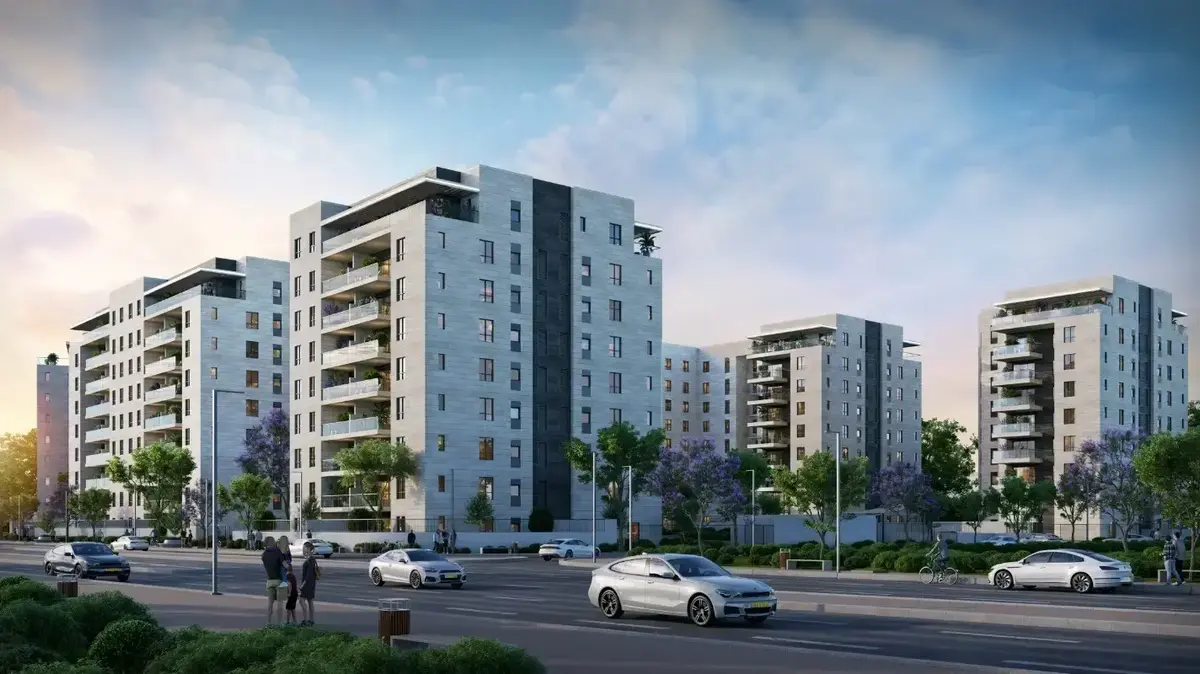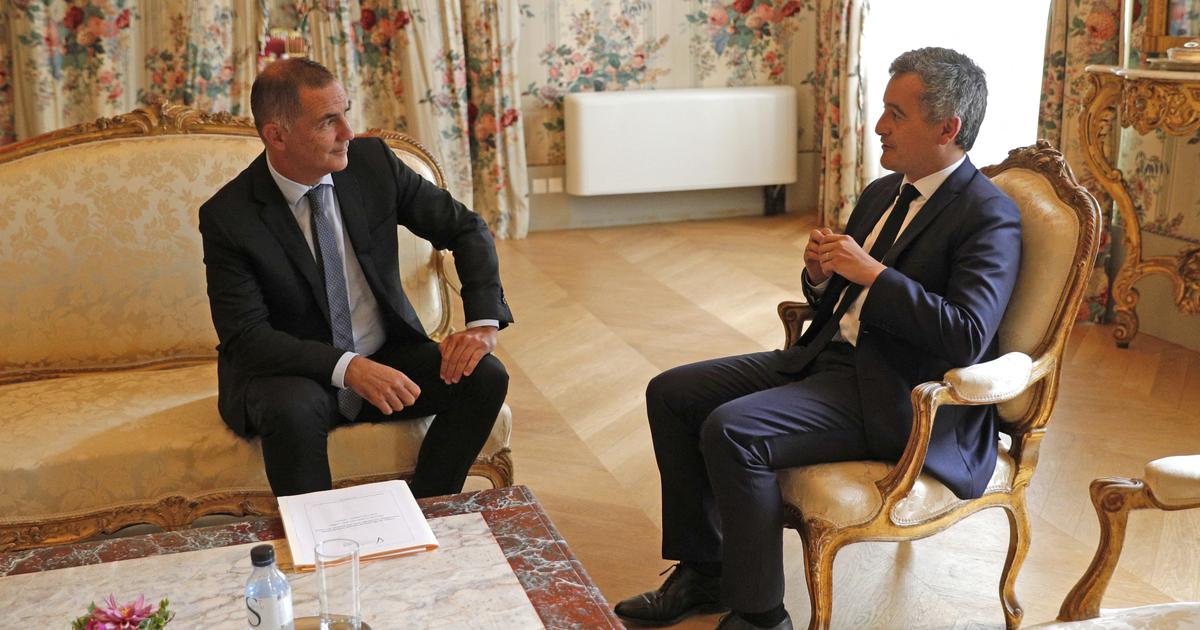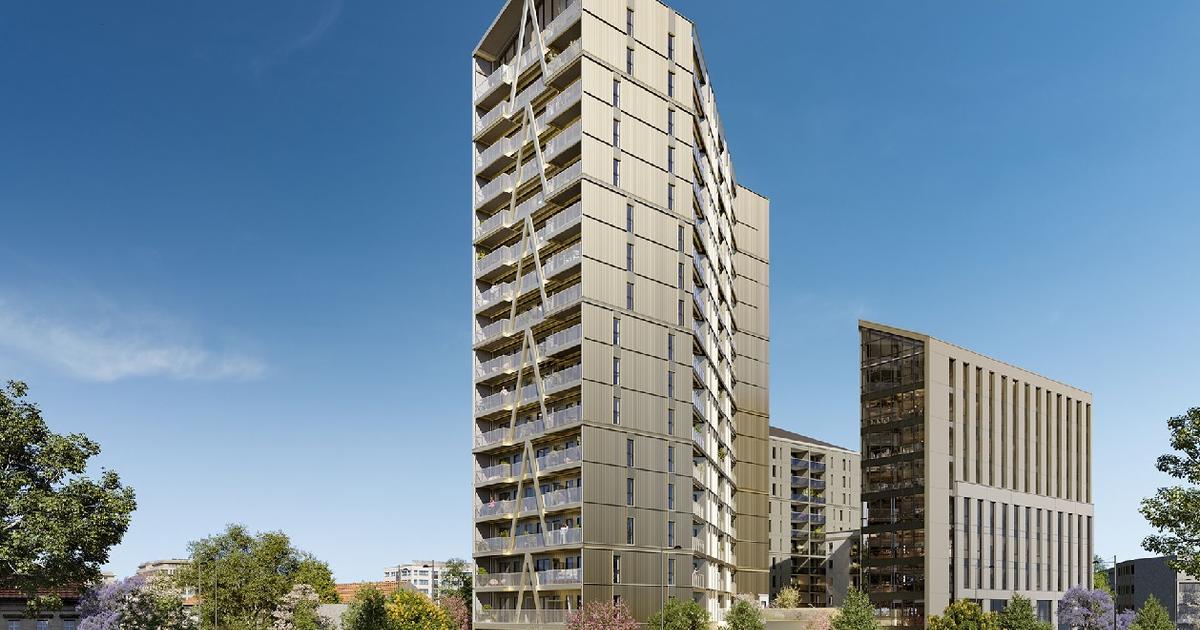Atsumat 75 Rahav - a special project from the real estate section (Photo: Walla system!, Walla system!)
Sabri Marnan, the version of reality: our small country will celebrate its 75th birthday when it is more divided than ever.
Among the four tribes mentioned by Rivlin in his famous speech, there are growing rifts, in all areas of life, and yes - also in residences.
Just this week we heard about a huge tender in Kiryat Gat, half of it for the ultra-Orthodox and half for the seculars.
5,300 apartments for each sector in the two different parts of the city.
Is it possible to connect the neighborhoods, in the atmosphere that prevails in the country today, when the equality of the burden is catching more and more unrest among the public?
The answer is no.
These are two different worlds.
In the State of Israel - as the number of sectors, so are the forms and methods of construction.
Will the apartments also cost the same?
Most likely not.
The young ultra-orthodox public is willing to settle for cheaper construction and fewer prestige symbols.
In a special project on the occasion of the country's 75th Independence Day, we set out to examine the difference between us, with a sociological-anthropological perspective.
Seculars in Tel Aviv: put more emphasis on design and lifestyle compared to Haredim (Photo: ShutterStock, Shutterstock)
Today's needs when it comes to housing solutions are changing both geographically and in aspects of lifestyle.
The different needs affect the planning of the entire project - both in the environmental planning, in the planning of the building itself and of course in the interior design of the apartment.
A clear example that characterizes the marketing concept and the planning derivative of residential projects in Israel exists in the differences between the planning of residential projects for the religious and traditional population in Jerusalem and Yosh - and the planning for the secular/liberal population in the Gush Dan and Sharon metropolis.
More in Walla!
10 weeks and you will know how to swim long distances!
At TI we commit to success!
Served on behalf of TI SWIM
Haredim: unlike seculars, the apartments on the lower floors are marketed at a higher price than on the higher floors (Photo: ShutterStock)
Both populations require a planning adjustment that takes into account different planning nuances and different tastes: the needs of the religious population, for the most part, arise from the fact that it is a family with many children and grandchildren, who often hosts at their home, often cooks and eats at their home.
The religious population usually maintains privacy and modesty and is more restrained in regards to the external appearance of the houses.
In contrast, the secular population in the Central and Sharon region is generally freed from the constraints of religious laws and halachites, puts more emphasis on visibility and lifestyle, eats out more than at home, hosts less and focuses on the aesthetics and interior design of the apartment.
Druze in Dalit El Carmel - for the most part, the emphasis is on hospitality - two living rooms and a large yard (Photo: Reuven Castro)
In planning the projects for the ultra-Orthodox population in Jerusalem, for example, at the building level, it must be taken into account that a religious family will prefer to live in buildings up to 8 stories high, to avoid using the elevator on Shabbat, while the secular population prefers to live in high-rise towers;
Therefore, already at the planning stage, a combination of Shabbat elevators with kosher, sukkah balconies that affect the external visibility of the building, large stroller rooms, etc. were taken into account.
In planning for the religious and traditional population in the Judea and Samaria region, the planning adjustments take into account the desire for community and cooperation - connecting buildings in a common yard, access passages, shared gardens, etc.
On the other hand, in the towers in Tel Aviv there are tenants who live for years without knowing their neighbors at all, so for the secular population a luxurious lobby, privacy, high-quality elevators, the size of the parents' unit, etc. will be more important.
National religious: for the most part, live in Yosh areas, in detached houses (Photo: AP)
What about the design of the apartment itself?
In order to investigate the differences between the sectors, both in terms of construction and planning and design, we turned to architects and interior designers who specialize in planning, construction and design in all sectors in Israel: in the Jewish sector - secular, ultra-Orthodox and national religious, as well as in the Arab sector - Muslims and Druze.
Dror Obeh Zion, CEO and owner of the Dara Real Estate Marketing Company, explains that "in terms of apartment interior planning for the religious population, one should take into account large spaces for entertaining - a large and spacious dining area, bedrooms that can accommodate more than one child, spacious kitchens with double sinks and sometimes Also double refrigerators, ventilation windows in the kitchen, a designated sink for washing hands and more."
In addition, Ohev Zion explains, that "since the religious population emphasizes modesty and privacy, the apartment will have more modest windows and shutters, unlike the current trend in the world of design, as well as fewer glass curtain walls, similar to the common construction in towers in Tel Aviv. Another design element in the apartment that is different in Jerusalem and Io "Q Compared to Tel Aviv and Sharon, it is the heating issue.
If heating an apartment with an air conditioner is enough in the center of the country, then in Jerusalem and Yosh another heating system is required, such as underfloor heating, a Deco Heat system on electricity, heating with gas or a fireplace."
"From a marketing point of view, in places where there is an ultra-Orthodox population, the pricing of the apartments on the lower floors will be higher than on the higher floors, while with the secular population it is completely the opposite."
The design of a house is common in the ultra-orthodox sector.
Design and architecture Judith Schneider (photo: Oded Smeder)
Tamir Lulu, the vice president of marketing and sales of Africa Israel Residential, expands on the subject and says that: "The considerations for choosing an apartment among apartment buyers in the various sectors are fundamentally different mainly due to differences in culture, customs and the different day-to-day conduct between apartment buyers from the ultra-orthodox and traditional sectors, and those from the secular and Arab sector.
In the secular sector, a standard apartment is 4 rooms, 100 m2, with a significant emphasis on a large balcony and a spacious and furnished kitchen."
"For the Arab sector, the main consideration in choosing the apartment is determined on the basis of its suitability for hospitality. Accordingly, the sector's apartments are characterized by two large hospitality areas, with small rooms next to them, and they are estimated to have an average area of approximately 115 m. In the ultra-Orthodox sector, there is a significant emphasis on accessibility to observing mitzvot and symbolic events in the apartment, such as an area suitable for holding a Shabbat meal, a place to place holy books, two sinks that are far from each other and a sukkah balcony, open to the sky and the stars. For many in the ultra-Orthodox sector, an apartment without a sukkah balcony means an apartment that is not relevant to their needs, the so-called deal breaker."
Visualization of a common house in the Arab sector.
Design and Architecture Judith Schneider (Photo: Judith Schneider)
Hagit Wolf, director of Ken Hathor's urban renewal division in Jerusalem, specializes in planning and building apartments for the various sectors of the city, referring to the nature and style of construction of the apartments intended for the ultra-Orthodox audience: "Working in Jerusalem, we meet populations from different sectors that make up Israeli society, and we are required to adapt the appropriate construction style to each population to her way of life. Over the years we have built thousands of units for an ultra-orthodox audience, with the necessary sensitivity and while understanding the needs of the community and building according to technical specifications based on the rules of Halacha."
"The ultra-Orthodox apartments are different from apartments built for other sectors. One of the places where the difference is best expressed is the kitchen. It starts with its location, which, unlike the practice in new construction where the kitchen is located as part of the public space, in ultra-Orthodox homes they prefer the kitchen to be in a separate room. The kitchen must be Large because there are two sets of dinnerware - for meat and milk and other dishes intended for Passover. The kitchen must also include two sinks, with the priority being to separate each sink so that it is on a separate marble. If that is not possible, then you need two sinks with two separate faucets and a gap between them. The same goes for the oven and the dishwasher, that many families use two ovens and dishwashers - with separation for meat and dairy."
Design of a house is common in the secular sector.
Developed by Artpro, designer Keren Meir (Photo: Shiran Carmel courtesy of Artpro Developers Barzel)
"In the planning of the contractors, one should take care of a large dining area, which in many cases is used for the Shabbat meal, but also as a place to study during the week, so there is an additional dining area in the kitchen. Also, it should be taken into account that there will be room for a sacred library in the living room, and to place a minimal sink for washing hands near the living room , usually near guest services. In construction for the ultra-orthodox sector, there is a priority for the number of rooms and not necessarily for their size, since we are dealing with families with many children, the priority is for a number of rooms, even if it comes at the expense of spacious rooms."
"They are content with standard-sized rooms. The location of the doors is also important. In order to preserve the privacy of the parents, we make an effort to have the parents' room be the last room in the apartment and far from the public space. We also pay attention to the location and size of the windows, so as not to sin by blinding the eye and to preserve privacy The members of the house, and of course for the construction of a sukkah balcony that would provide a halachic response to the establishment of a sukkah in the family home. The public areas must also be adapted to the ultra-Orthodox audience, so for example it is necessary to make sure that elevators are built with the kosher of the Technological Institute for Halacha and Science."
"Finally, the conduct with the ultra-Orthodox sector is also reflected in the agreements we make with them, in which we must include the employment permit and an arbitral tribunal."
Wolf explains.
Simulation of a common house in the Druze sector.
Design and architecture Judith Schneider (Photo: Damiya - a studio)
According to Judith Schneider, owner of an architecture and interior design studio specializing in the planning and design of living environments for the various sectors, the hospitality areas are an important and central axis in all sectors, but especially for members of the ultra-Orthodox, Druze and Arab sectors: "The families in these sectors are by nature large and on certain occasions, in particular on holidays, And next to the celebrations, they host many dozens of participants at once or throughout the same day. Therefore, the needs and palliative care in their homes are completely different from those in the secular home."
"In the homes of Muslim families, for example, we see two living rooms: one is the family one, which by its very nature is enveloping and warm, and where we find the TV screen and the fireplace; usually a wooden fireplace like in the parents' house, even when it comes to homes with a sophisticated and modern design, not only in country-style homes. By the way, this is also the case in The Druze. The other living room is the formal living room - a place of honor for the guests. It is a very luxurious and well-invested space and it is important for them to create the wow effect in it. The sofas are upgraded and luxurious, the lighting is impressive and in many cases the furniture is specially ordered from abroad."
The design of a house is common in the ultra-orthodox sector.
Architecture and Design Judith Schneider (Photo: Oded Smeder)
According to Schneider, "The kitchen is the heart of the home in all sectors, but in religious and ultra-Orthodox families, the signs and requirements are different. It depends on the current and the degree of strictness, but in many homes the separation between milk and meat is absolute, so you have to make two of everything: two ovens, two sinks and two separate work surfaces This is an area that is emphasized at the very beginning of planning, and in the case of apartments and houses whose square footage is predetermined, the large kitchen will sometimes come at the expense of the other functions. In the meantime, for ultra-Orthodox families it is first and foremost important that there be room for everyone, even if it comes at the expense of comfort... in many of them Most of the entertaining is not done in the living room, but rather around the dining table. If in secular homes the dining area is opened for special events, the table is open all year round from the start. A large table also solves the issue of modesty, by the way - there is enough space around it for everyone."
"The bedrooms in the ultra-Orthodox houses are also different, in particular due to the fact that in the center there is a Jewish bed that can be attached and detached as needed. This is an effective solution for the Nidah period and it requires the planning of a modular space in which the furniture can be moved according to the period, not only the bed but also the chests of drawers The night and the lighting fixtures. All of this should be taken into account in the planning and enough space should be left for everything," says Schneider.
"In investment homes, these beds are luxurious and at the same time separate. Most of all, since it is not uncommon for dozens of guests to stay and sleep in them at the same time, in some of them we plan pull-out beds - so the children and grandchildren can spend the night together with the couple. In the children's rooms, we often see bunk beds."
In Schneider's opinion, the OUTDOOR environment is also influenced by culture and mitzvah: "There is a halacha that is taken into account, for example in the case of a sukkah that cannot be set up anywhere. As a rule, the outdoors enters heavily into the cake of the construction and renovation budget. In most of the houses of the members of the Arab sector, a tabun is installed It's something that enters strongly in the general sector, but in their case it is seen more strongly."
Simulation of a common house in the Druze sector.
Design and architecture Judith Schneider (Photo: Damiya - a studio)
According to Orli Gohar Ben-Harosh, the home designer of ellita living, "in the ultra-Orthodox homes, for the most part, there are no televisions and computers, and instead they immerse themselves in reading books and Torah, therefore libraries have an important and central role. The books are given a place of honor and are presented in an elegant way. are an integral part of the space and one of the functions of the bookcases is to enhance them. To this end, many choose bookcases with a modern and light metal look that balance the display and give more volume to the books themselves."
"With the secular, the perception of life is different, and they attach great importance to everyday comfort. First and foremost, it is important to them that the couch be comfortable to relax on in front of the television. The hospitality at home is less significant, since a large part of the interactions take place outside in restaurants, bars and events. For exactly the same reason, the attitude The dining area is different - the emphasis is less on the function and more on the design, a corner that looks like a jewel in the house."
Design of a house is common in the secular sector.
Developed by Artpro, designed by Keren Meir (Photo: Maor Moyal)
Kobi Khalifa, owner of the Arteferro company, which specializes in the design and production of Belgian iron windows, explains that "while in the secular sector the design is more mainstream, minimalist and clean, in the Arab and ultra-orthodox sector we see a clear preference for a more dominant and romantic design - a product of the traditional design present in the houses of worship of both religions. They are exposed to this concept of design and adopt it in their homes. For this reason, in their homes we see motifs taken from these worlds of content, in an abstract form or in a more modern interpretation. In the meantime, in the homes of the ultra-orthodox, there is a place of honor for large libraries that are usually dedicated to the holy books, which is less noticeable in most of the secular ones. The main focus in the public space is on the wall where the TV screen is located."
"We also see differences in the outdoor environment: in the religious families there is a focus on hospitality based on large dining tables around which the family gathers, which are under a large pergola, something that also exists in the secular sector, only that in this case the main hospitality takes place around the outdoor kitchen. The culture of leisure among the seculars is present and they You can also cook on dates and weekends."
sums up a suit.
Real estate
Real estate magazine
Tags
real estate










/cloudfront-eu-central-1.images.arcpublishing.com/prisa/Z45E6KV7VJGUXAKJWH7VA4NJSE.jpg)




